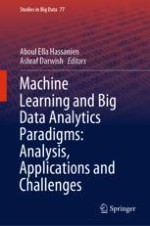2021 | OriginalPaper | Chapter
Experimental Studies of Variations Reduction in Chemometric Model Transfer for FT-NIR Miniaturized Sensors
Authors : Mohamed Hossam, Amr Wassal, Mostafa Medhat, M. Watheq El-Kharashi
Published in: Machine Learning and Big Data Analytics Paradigms: Analysis, Applications and Challenges
Publisher: Springer International Publishing
Activate our intelligent search to find suitable subject content or patents.
Select sections of text to find matching patents with Artificial Intelligence. powered by
Select sections of text to find additional relevant content using AI-assisted search. powered by
